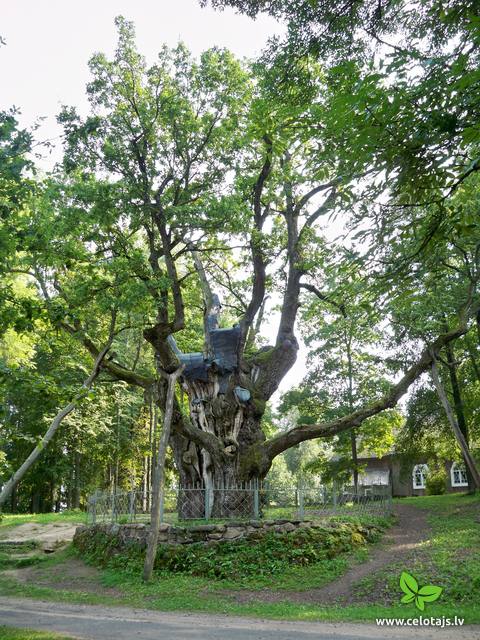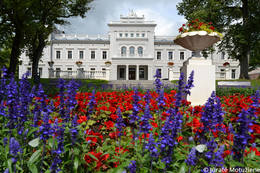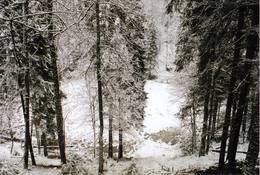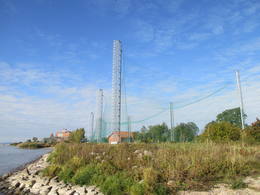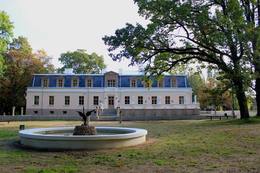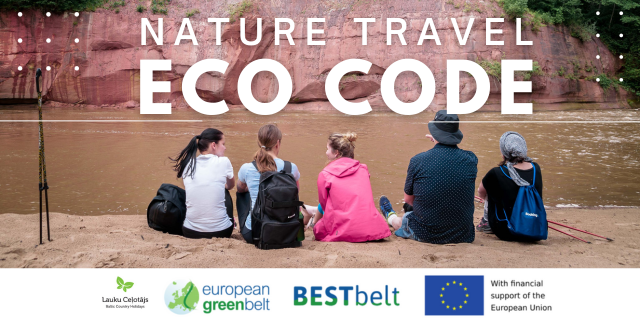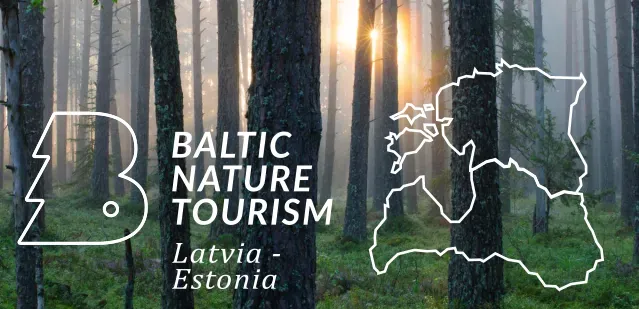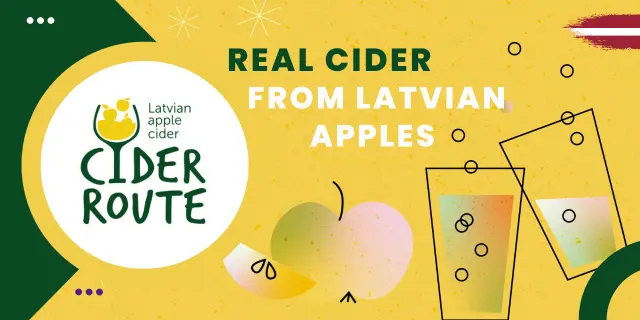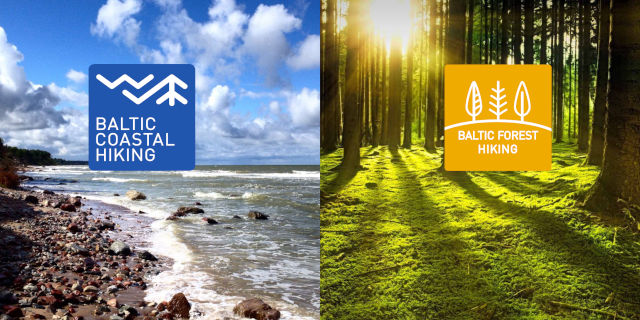Naturobjekte in Litauen
Was ist das Besondere an der Natur in Litauen?
Die Kurische Nehrung - ein sandiger, wüstenartiger Landstrich zwischen dem Ostseesee und dem Kurischen Einlass, die hügeligen Landschaften der Region Samogitia, die blauen Spiegellabyrinthe der Seen in der Region Aukštaitija, die Kiefernwälder in der Region Dzukija, Die Kurven des Nemuna-Flusstals und die vielen regionalen Naturparks, die nicht nur zum Schutz der Natur, sondern auch zur Erholung und zum Interesse der Menschen geschaffen wurden - dies sind die Naturwerte, die Gäste Litauens anziehen.
Handle verantwortungsbewusst - folge dem Grünen Rat!
| Überblick | Details |
|---|---|
|
Litauen
Nationalpark AugstaitijaDer erste Nationalpark Litauens. Gegründet für den Schutz der Landschaften und der Seen der Aukštaitija-Anhöhe, der etnographischen Dörfer und der Naturvielwalt. |
|
|
Litauen
Seires dabas taka (Seirės gamtos takas)Četrus kilometrus garā lokveida un marķētā dabas taka meklējama Plateļu pilsētiņas ziemeļaustrumu daļā. Tā ved pa dažādiem biotopiem – mežu, purvu, ezera malu, atklājot dažādas ainavas un tajās mītošās augu, putnu un dzīvnieku sugas. Šī ir interesantākā un ainaviskākā no Žemaitijas nacionālā parka takām. |
|
|
Litauen
SCHLOSSPARK PLUNGĖPlungė ist berühmt für der Park der Fürsten Oginski. Der Park im gemischten Stil wurde im 18.-19. Jh. anstelle eines vormals heiligen Bannwalds eingerichtet. Prunkstück des Parks sind eine der ältesten und mächtigsten Donnereichen (Perkunaseiche) in Litauen, die legendenumwobene Weinende Weide, die fünfstämmige Esche. Auf Geheiß des Fürsten Oginski wurden 7 Teiche in Kaskaden angelegt, verbunden mit steinernen Schleusen-Brücken. Ein besonderen Akzent für die Landschaft setzt das durchfließende Flüsschen Babrungas. |
|
|
Litauen
Platelu ezers (Platelių ezeras)Nacionālā parka galvenā ainavas dominante. Ezers ir ~ 8,4 km garš un līdz 3,3 km plats. Tā austrumu krasti pārsvarā ir ar mežiem apauguši, ziemeļrietumu krasts – purvains, bet rietumu krastā parādās apdzīvotas sētas un simpātiskā Plateļu (Plateliai) pilsētiņa, kur meklējamas skaistākās skatu vietas. Ezera krastos ir labi attīstīta infrastruktūra - tūristu mītnes, ēdināšanas uzņēmumi (Plateļos), ūdenssporta un atpūtas inventāra noma. Ūdens dzidruma dēļ, Plateļu ezeru ir iecienījuši zemūdens niršanas entuziasti. Ezerā ir vairākas salas, no kurām interesanta ir Pils salas (Pilies sala), uz kuras no 15. – 16. gs. atradās muiža. Pastāv uzskats, ka senie Plateļu apkārtnes iedzīvotāji sākotnēji ir dzīvojuši uz salas, kuru ar krastu savienojis uz pāļiem celts tilts. Jāpiemin, ka 15 gs. pirmoreiz pieminētā Plateļu pilsētiņa atradusies uz Šventorkalņa (Šventorkalnis) kalna. Apkārt Plateļu ezeram ir izveidots ~ 24 km garš velomaršruts. Tā ir ļoti laba iespēja iepazīt parku videi un ceļotāja veselībai draudzīgā veidā. |
|
|
Litauen
Regionalpark AukstadvarisEin mit Wäldern und Seen reiches Gebiet im Nordteil der Dzūkija-Anhöhe. Das Täufelsbeet (Velnio duobė) ist eine bis 40 m tiefe und 200 m breite trichterförmige Grube, die Entstehung der mit einer Tätigkeit eines urzeitlichen Gletschers verbunden ist. |
|
|
Litauen
BOTANISCHER GARTEN DER VYTAUTAS-MAGNUS-UNIVERSITÄT IN KAUNASDer Botanische Garten wurde etwa 1923 begründet, als Zentrum der Botanik in Litauen. Der Garten hat eine Fläche von über 60 ha, wovon etwa 30 ha von der öffentlich zugänglichen Ausstellung eingenommen werden. |
|
|
Litauen
Regionalpark GrazutėsGegründet für den Schutz der Landschaften und der Seen der Aukštaitija-Anhöhe, Arten und Biotope. |
|
|
Litauen
SCHLOSSPARK RENAVASDer Park Renavas (begründet im 19. Jh.) ist einer der Parks zum Repräsentieren, der jedoch seine ursprüngliche, naturnahe Form gut erhalten hat. In dem Parkfragment unterhalb des Schlosses sind bis heute viele exotische Bäume erhalten. Im nördlichen Teil des Parks und im Waldpark herrschen Ahorn, Linde, Esche, Fichte, Eiche u.a. vor. Prunkstück des Parks ist die mächtigste Fichte in Litauen mit einem Durchmesser von 1,2 Meter, ebenso eine Linde, aus deren umgefallenen ursprünglichen Stamm sechs Äste zu neuen, unabhängigen Stämmen erwachsen sind. Der Eingang zum Park ist als Pergola mit Kletterpflanzen ausgeführt. |
|
|
Litauen
The Kursiu Dune (Kursių nerija)In terms of territory, it is the most impressive dune range in the Baltics. This is the only place in the Baltics, where one can enjoy open dune sands that are still active and, under the influence of wind, form the so-called eolian relief forms. There are trails, wooded trails and a paved bikeway for the conveniences of visitors. In order to protect the dune, The Dunes of Curonian spit National Park has been established . |
|
|
Litauen
Regionalpark LabanorasEins der bewaldeten und seenartigen (ung. 285 Seen) Gebiete Litauens mit vielfältigen Erholungsmöglichkeiten, einbezogen aktive Erholung. |
|
|
Litauen
Küsten-regionalparkEin Gebiet zwischen Palanga und Klaipeda, gegründet für den Schutz der Dünen und Biotopen der Küstenwälder. Ein asphaltierter Radweg läuft durch das Gebiet. |
|
|
Litauen
РЕГИОНАЛЬНЫЙ ПАРК ЖАГАРЕЖагаре с давних пор славится особым сортом вишен «Žagarvyšnė» («Жагарская вишня»). Существует несколько разновидностей этого сорта, которые различаются по времени созревания, урожайности, форме деревьев и другим признакам. Эти вишни и сейчас растут почти в каждом местном саду, став уникальным символом поселка Жагаре. |
|
|
Lithuania
The Nemuna Delta Regional ParkThe Nemuna River divides up into two large streams at its estuary at Kuršių Marios, and this has established the Rusnė Island. This is a unique environmental territory with wetlands, streams, ancient rivers, lagoon lakes and flood plains which are important places for birds to nest and rest during migration season. Vast tracts of this territory are flooded each spring. The park includes the territory to the N and W of Rusne (lagoons, swamps, fishing ponds, Kuršių Marios).
|
|
